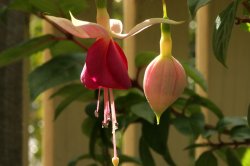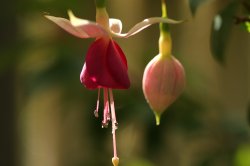After several months of research, I picked up a Nikon D80 and two lenses (18-135mm and 55-200mm VR Nikkor) recently.
Ive done a considerable amount of reading[1], and am curious about how others are deciding upon aperture values when doing basic 'walking around' shooting. By this I mean generally tripod-less and wanting to capture whatever is going on around you at the time. For example, I went walking through Boston last weekend taking photos and quickly found myself paying more attention to which aperture I should use for shots than what was going on around me.
I have a clear understanding of aperture and its relationship to shutter speed, light, and ISO. What I found slightly overwhelming were the myriad aperture values to choose from and when to chose *just* the right one. Using aperture priority, I played around with several shots before moving to shutter priority and letting the camera pick the aperture value once I was metered properly.
My question is: is there a rule of thumb for 'basic shots' Ive overlooked, or do I need to get in the habit of metering with my eyes first to reduce camera-adjustment time when shots present themselves?[2]
I dont want to replicate a P&S, rather Id like to gain a more rapid understanding of what to choose and when.
[1] Including Peterson's 'Understanding Exposure'.
[2] Obviously this response is 'it depends'; its the various experiences of the board Im in search of, though.
Images are here:
http://sienar.org/v/album_002/?g2_page=4
starting with _DSC0002.
She's an old server, so be gentle.
Ive done a considerable amount of reading[1], and am curious about how others are deciding upon aperture values when doing basic 'walking around' shooting. By this I mean generally tripod-less and wanting to capture whatever is going on around you at the time. For example, I went walking through Boston last weekend taking photos and quickly found myself paying more attention to which aperture I should use for shots than what was going on around me.
I have a clear understanding of aperture and its relationship to shutter speed, light, and ISO. What I found slightly overwhelming were the myriad aperture values to choose from and when to chose *just* the right one. Using aperture priority, I played around with several shots before moving to shutter priority and letting the camera pick the aperture value once I was metered properly.
My question is: is there a rule of thumb for 'basic shots' Ive overlooked, or do I need to get in the habit of metering with my eyes first to reduce camera-adjustment time when shots present themselves?[2]
I dont want to replicate a P&S, rather Id like to gain a more rapid understanding of what to choose and when.
[1] Including Peterson's 'Understanding Exposure'.
[2] Obviously this response is 'it depends'; its the various experiences of the board Im in search of, though.
Images are here:
http://sienar.org/v/album_002/?g2_page=4
starting with _DSC0002.
She's an old server, so be gentle.



